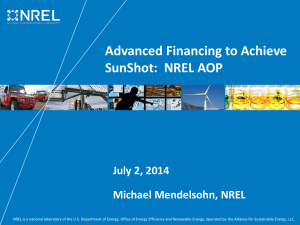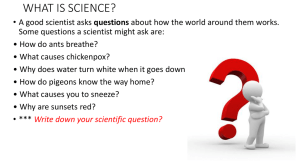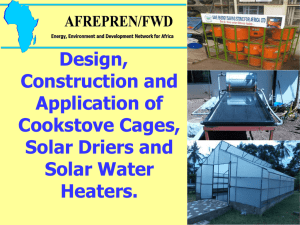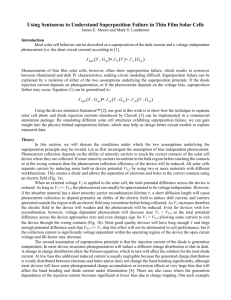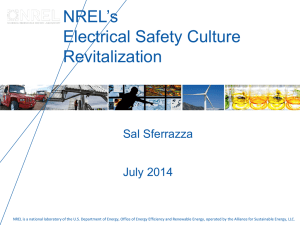Science panel presentation
advertisement
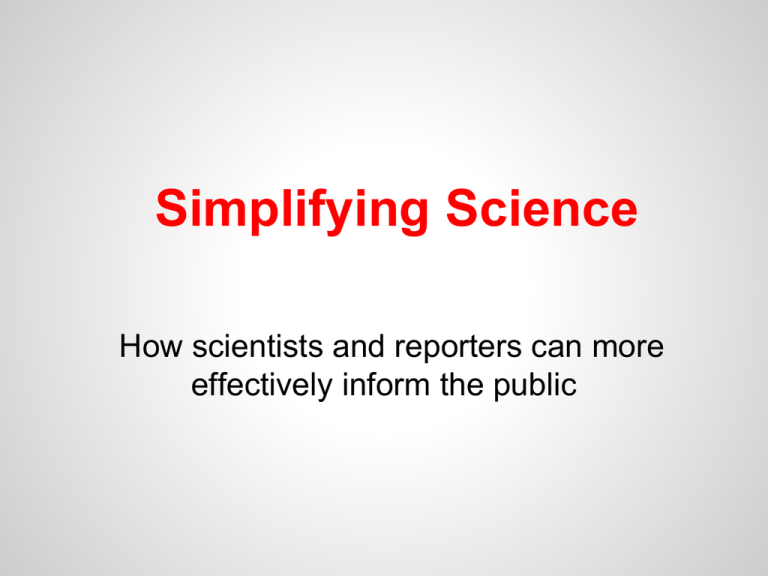
Simplifying Science How scientists and reporters can more effectively inform the public Scientist says... Reporter writes .... Graphics courtesy Discover magazine. Some people think both scientists and reporters just screw things up. Stone Age Villages Found! Explaining Science What works and what doesn't Why is it critical to get the science right in news stories? Coal Country by Ian Frazier At 12:30 in the morning of October 11, 2000, a mountain in eastern Kentucky burst open and let out a flood of mining waste bigger than the Exxon Valdez oil spill. Coal sludge damaged homes and killed everything in 20 miles of streams. Two years later, the land is green again but the bitterness remains. When scientists and the media both hype a story, it leads to misleading information CNN: Sun 'ejection' killed TV satellite http://www.cnn.com/TECH/9701/21/cosmic.chaos/index.html A World of Value in Einstein's Error To Bryan Eastin, Albert Einstein's most interesting idea may be one that was wrong. It was 1935, and Einstein and two colleagues were trying to make sense of the world of quantum physics. They failed— but in such an interesting way that physicists today still wrestle with the questions they raised. This is a story panelist John Fleck wrote and feels he didn't accomplish what he set out to do. More details in the Simplifying Science round up at www.nmspj.org. A Kettle of Knowledge VALLES CALDERA -- John Geissman bounded up the steep side of the volcanic knoll, leaving a trail of geologists panting behind him. A tough half-mile climb above the valley floor, in a clump of oak, Geissman found what he was looking for -- a piece of scientific history. On this 1,000-foot high mound of volcanic rock in the summer of 1964, geologists found the final piece of a puzzle that changed the way we view our planet. Geissman dropped his pack and circled a small outcrop of the rock that nearly four decades ago proved the theory of plate tectonics -- that the continents move beneath our feet. This was one of John Fleck's favorite stories as a science writer - a chance to explore the people behind a great discovery. Factually correct science stories can be boring if they leave out the human element... For Patients With Both HIV and Tuberculosis the Timing of Drug Therapies Is Critical ScienceDaily (Oct. 27, 2011) — In sub-Saharan Africa, tuberculosis is the disease that most often brings people with HIV into the clinic for treatment. Infection with both diseases is so common that in South Africa, for instance, 70% of tuberculosis patients are HIV positive. How best to treat these doubly infected patients-- who number around 700,000 globally-- is the subject of a new study, published in The New England Journal of Medicine, by scientists at Columbia University's Mailman School of Public Health and CAPRISA (Centre for the AIDS Programme of Research in South Africa). http://www.sciencedaily.com/releases/2011/10/111020024449.htm Wording Matters The Cancer Chronicles The official press release from the National Cancer Institute said the study “confirmed that there are four primary subtypes of breast cancer,” implying that the classification already existed. But the paper itself, published in Nature, said that it “demonstrated the existence of four main breast cancer classes.” Something was getting lost in the semantics. www.santafereview.com A headline can ruin an otherwise correct science story..... From a Department of Energy news brief:Quantum Dot Solar Cell Tops 100% NREL researchers have demonstrated the first solar cell capable of producing a photocurrent with an external quantum efficiency greater than 100%. Panelist and Sandia engineer Greg Nielson thought this headline misleading. NREL newsletter does better.... NREL Scientists Report First Solar Cell Producing More Electrons In Photocurrent Than Solar Photons Entering Cell December 15, 2011 Researchers from the U.S. Department of Energy’s National Renewable Energy Laboratory (NREL) have reported the first solar cell that produces a photocurrent that has an external quantum efficiency greater than 100 percent when photoexcited with photons from the high energy region of the solar spectrum. Stop the Presses! Nielson shrinks solar cells to the size of glitter!! Greg Nielson pushes a small jar full of rubbing alcohol across his desk at Sandia National Laboratories in New Mexico. In the jar float shiny solar cells the size of glitter. “If you have panels of these on top of Walmart, you get twice as much power [as conventional photovoltaics] and your costs go down by half,” he says. For the past six years, Nielson has worked to dramatically reduce the size of solar cells in order to make them more durable, efficient, and cost-effective. Misrepresentation of Randomized Controlled Trials in Press Releases and News Coverage: A Cohort Study http://www.plosmedicine.org/article/info:doi%2F10.1371%2Fjournal.pmed.100 1308 How Can Scientists Engage with Journalists? Doesn't hurt to get creative when explaining science..... More Resources and Tips Nine ways scientists can help improve science journalism Escape from the Ivory Tower - A Guide to Making Your Science Matter. By Nancy Baron, Island Press 2010. ISBN 978-1-59726-664-2. Don't Be Such a Scientist - Talking Substance in an Age of Style. By Randy Olson. Island Press 2009. ISBN 978-1-59726-563-8. A Scientist's Guide to Talking with the Media-A Practical Guide from the Union of Concerned Scientists. By Richard Hayes and Daniel Grossman. Rutgers University Press 2006. ISBN 978-0-8135-3858-7. Am I Making Myself Clear? A Scientist's Guide to Talking to the Public. By Cornelia Dean. Harvard University Press 2009. ISBN 978-0-674-03635-2. Follow our panelists: John Fleck, Albuquerque Journal @jfleck www.inkstain.net\fleck\ Laura Paskus, Independent Journalist @LauraPaskus http://southwestreporter.com/bio George Johnson, New York Times @byGeorgeJohnson www.santafereview.com Thanks for participating!

